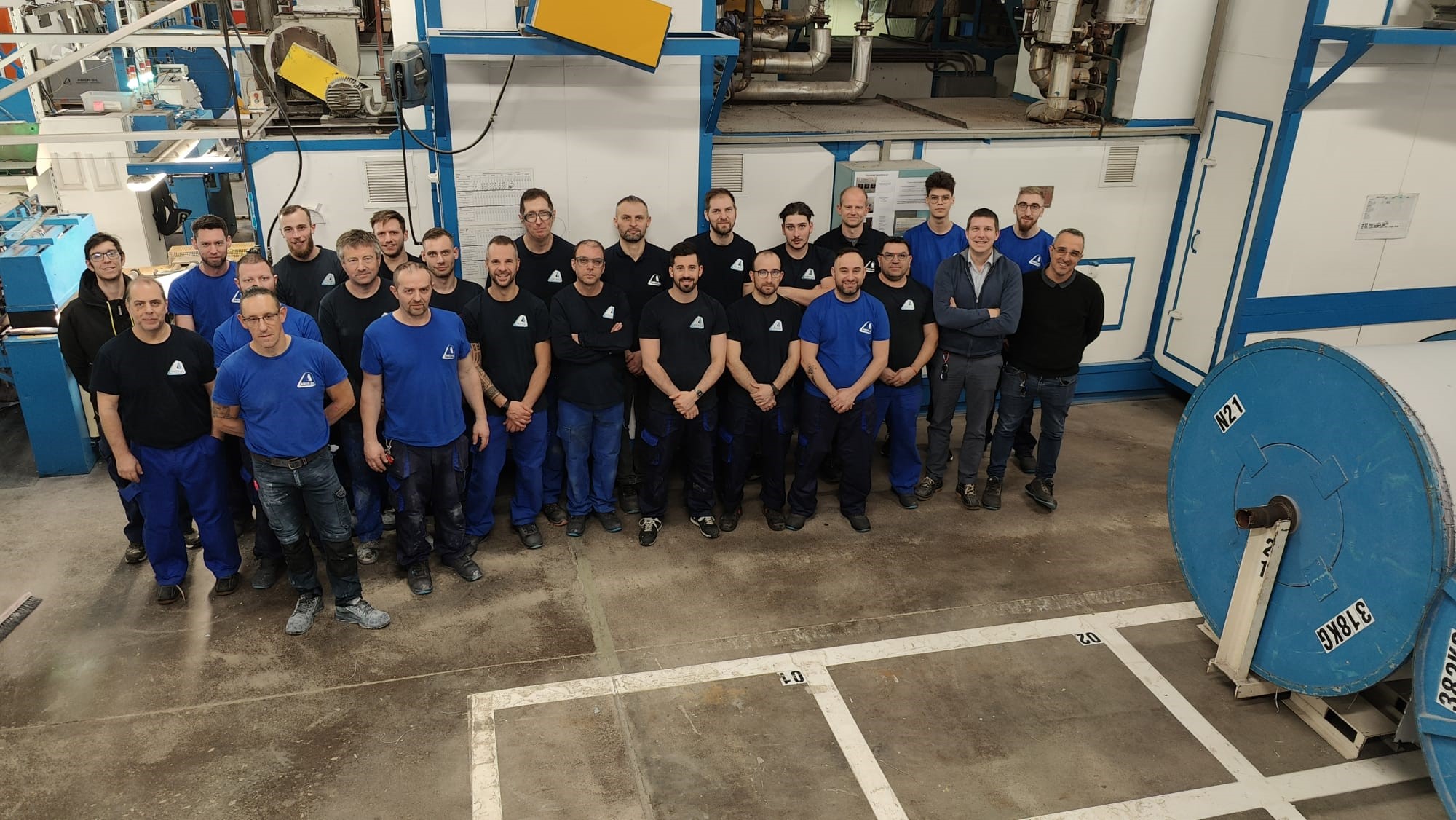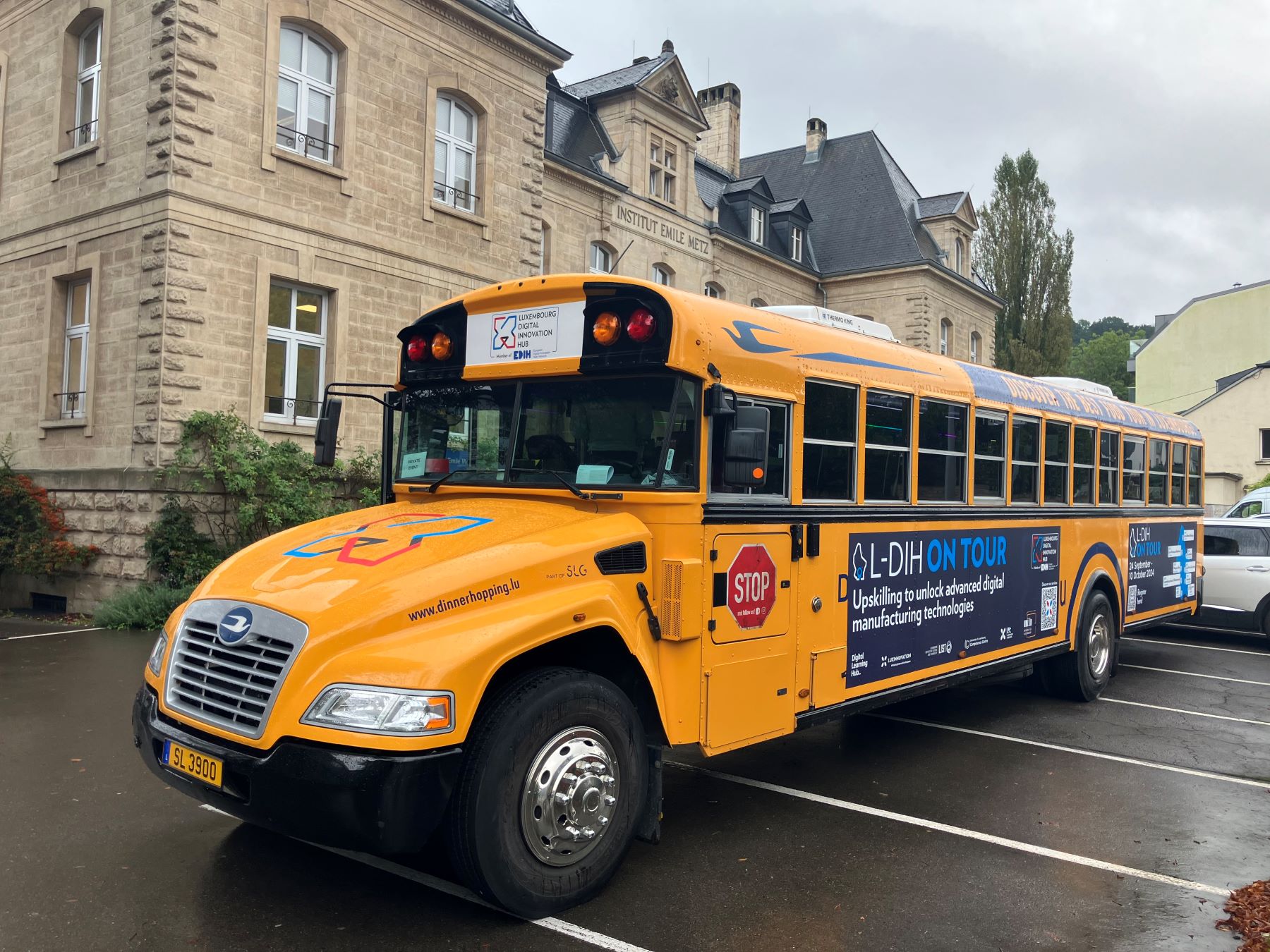Test first, invest after: Amer-Sil’s path to Industry 4.0
In collaboration with the Luxembourg Digital Innovation Hub (L-DIH), Amer-Sil is setting the stage for its digital transition backed by technology testing before making investments.

According to McKinsey, around 84% of digital transformation projects fail due to the lack of a clearly defined strategy and other implementation issues that may arise along the way. Unfortunately, many manufacturers find flaws in their strategy after making substantial investments.
“We decided to offer “test before invest” services to enable early technology testing for all manufacturers in the local ecosystem before they make investments, decreasing the risk of expensive errors uncovered too late in their digital transformation journey,” states the Luxembourg Digital Innovation Hub (L-DIH) Manager, Joachim Clemens-Stolbrink.
Luxinnovation, the Luxembourg House of Cybersecurity, the Luxembourg Institute of Science and Technology (LIST), the University of Luxembourg, and the University of Luxembourg Competence Centre are all members of the L-DIH consortium, which is dedicated to supporting the country’s manufacturing ecosystem in their digital transformation.
Moving toward connectivity and Industry 4.0 was one of the first needs we identified.
Laurent Winandy, Director of Production
Luxembourg-based battery component manufacturer Amer-Sil is one of the first companies to benefit from the initiative. Director of Production, Laurent Winandy, explains how it all started.
“Moving toward connectivity and Industry 4.0 was one of the first needs we identified when I joined Amer-Sil in November 2022. We reached out to Luxinnovation to discuss the optimal approach to achieving this goal. Two aspects were particularly crucial for me: the technology - how it would function and how we could integrate it into Amer-Sil and addressing change management – how to align my team and the entire company with our target,” he underlines.
Company-wide workshops
The process began with a series of three distinct workshops conducted between December 2023 and January 2024. Two of the three workshops were carried out at the company’s premises, and they all involved diverse profiles from Amer-Sil’s team, including IT specialists, engineers, continuous improvement experts, and maintenance personnel.
“In the first workshop, we focused on idea exploration, building scenarios and identifying the low-hanging fruits, so areas that we could test quite easily to see if we can scale it up for the entire programming process,” Mr Winandy explains. The second workshop was centred around bridging technical and theoretical aspects. “After identifying all the key parameters that we could potentially monitor on our machines, we extracted this information for LIST to carry out some very first technology tests,” he says.
We focused on idea exploration, building scenarios and identifying the low-hanging fruits.
This culminated in the creation of an initial dashboard that was discussed during the third workshop to determine if the proof of concept was valid. “Thanks to this report from LIST, we now have an estimation of structured work packages detailing the efforts and investments required at each stage. We hope to explore these further as part of a future R&D and innovation project,” he adds.
Data collection before artificial intelligence
The workshops yielded crucial insights, with a particular focus on the importance of data collection for a successful Industry 4.0 implementation. “In the absence of core automation staff, we had to connect all our equipment and collect the data required, and this was an eye-opener on our data quality and the significance of capturing robust and accurate data,” Mr Winandy mentions.
“From my experience in industry, data collection is potentially one of the biggest challenges as you need both IT and OT experts. We intended to implement artificial intelligence tools at the onset, but this testing experience revealed the most critical elements that we need to focus on right now, starting with data gathering, treatment and analytics, before implementing AI and machine learning tools, and then potentially moving towards digital twins” he continues.
This was an eye-opener on our data quality and the significance of capturing robust and accurate data.
The company is now in the process of recruiting student profiles with engineering automation background to participate in the transformation process and assist in data gathering. “From all our findings, it's evident that implementing Overall Equipment Effectiveness (OEE) tracking systems and optimising the energy efficiency of our machines will serve as the cornerstone of our operations,” he points out.
Amer-Sil is also in the process of undergoing an advanced digital assessment offered by the L-DIH to gain further insights into how specific business operations can be enhanced through digital tools. “With ageing production lines and capabilities in so many manufacturing companies today, moving towards Industry 4.0 could be a kind of salvation a lot of companies. I don’t think any company can survive in the next five years if they don’t move towards digitalisation,” Mr Winandy concludes.
_1.JPG?width=1800&height=1350&ext=.jpg)
